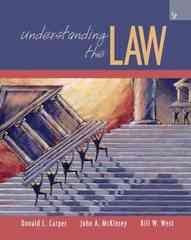Question
The Herreras are a typical New York family. They spend their monthly income of $3,000 on clothing and other goods. The price of clothing is
The Herreras are a typical New York family. They spend their monthly income of $3,000 on clothing and other goods. The price of clothing is $20 per piece, the price of other goods is $1 per unit.
a. Putting clothing along the horizontal axis and other goods along the vertical axis, draw the Herreras' budget constraint. In your graph, clearly label the numerical value of both intercepts. How many units of other goods must the consumer give up to consume one more piece of clothing? Write the expression of the budget line.
Suppose that the Herreras have a utility function (,)=ln()+9ln(),where x represents pieces of clothing and y represents units of other goods. The Herreras' marginal utility from clothing is =1while their marginal utility from other things is =9.
b. What is ,? Explain the economic interpretation of the MRS.
c. Find the Herreras' optimal basket of consumption (optimal choice). How many pieces of clothing do the Herreras buy each month? How much do they spend on clothing? How much do they spend on other goods?
d. In your diagram, add an indifference curve and illustrate the Herreras' optimal basket. Along the axis, clearly label the optimal amount of clothing and of other things.
e. One year, the price of cotton and other fibers increases and the price of clothing increases to $30 per piece. How does the higher price for clothing affect the Herreras' budget constraint?
f. After the price of clothing increases, do the Herreras buy more or fewer pieces of clothing? Do they spend more, less, or the same on other things?
Step by Step Solution
There are 3 Steps involved in it
Step: 1

Get Instant Access to Expert-Tailored Solutions
See step-by-step solutions with expert insights and AI powered tools for academic success
Step: 2

Step: 3

Ace Your Homework with AI
Get the answers you need in no time with our AI-driven, step-by-step assistance
Get Started


